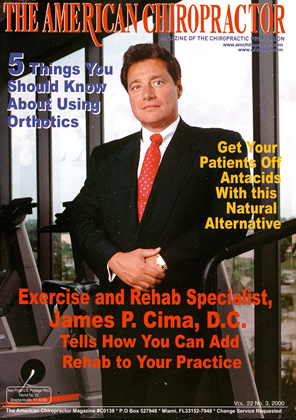L Ln actual fact, "subscapularis pain" is really a misnomer. This is because muscle dysfunction in the subscapularis does not typically give pain within the muscle such that patients complain of pain underneath the scapula. As an example, trigger points in the subscapularis create a pattern of referred pain that symptomatically suggests that a problem may exist in the posterior joint capsule of the shoulder (see Figure 1). The dark shaded areas reflect the area of greatest pain, while the stippled areas reflect less pain. Take special notice that the area of greatest pain produced by subscapularis trigger points is the posterior shoulder joint area. I suggest showing Figure 1, or a similar image, to your golfing patients. This will help patients to better understand that pain in a given location does not mean that the area of pain is the problem. Now lets take a hypothetical golfing patient complaining of posterior shoulder joint pain that comes and goes. The patient explains that he stretches out the area of pain on a regular basis, but it provides no relief. Figure 2 illustrates a standard shoulder stretch that is recom- mended to all golfers. Naturally your patient is doing this stretch in an attempt to help his shoulder. Your patient is also doing some strengthening exercises for the shoulder. Most golf fitness books and articles suggest that golfers do internal shoulder rotation exercises for the rotator cuff. This recommendation is based on the need to increase shoulder stability, and also because electromyographic studies have shown the sub-scapularis to be highly active during the golf swing. You examine the patient and discover that a trigger point is present in the sub-scapularis and it reproduces the pain complaint. You can reasonably conclude that your patient is stretching out part of his shoulder that has nothing to do with his pain, and he is doing exercises to strengthen and tighten a muscle that is too active. Treating the subscapula-ris consists of releasing the muscle via one of the many soft tissue procedures and also with basic rehabilitation methods (See Souza TA. Sports injuries of the shoulder. New York: Churchill Livingstone; 1994 and Hammer WI. ed. Functional soft tissue examination and treatment by manual methods. 2nd ed. Gaithers-burg: Aspen, 1999). This short article provides an example of how you can effectively treat and educate the golfers in your area. Golfers need to know that the presence of pain does not necessarily mean the area of pain is the problem. I would recommend going to various courses and organizations in your area and talking to golfers about this subject. You can demonstrate pain referral patterns very easily with charts or slides. You can explain that many golf stretches are arbitrary, and further explain that stretches should be performed on only those muscles that are tight. Finally, you can explain that stretching and warming up are two entirely different subjects, and go into whatever detail is appropriate for your audience. Golfers will love this type of presentation and, most likely, gravitate to your office as the golf season progresses and various pains develop. For more information, you may contact the author, David Seaman, DC, of Back-Swing Dynamics, Inc., 224 Thompson St., #193, Hendersonville, NC 28792; Phone: 1-800-231-6989; E-mail: [email protected]. «$♦ Fig. 1: Trigger Points in the Subscapularis Fig. 2: This illustrates a standard shoulder stretch that is recommended to all golfers.
 View Full Issue
View Full Issue






